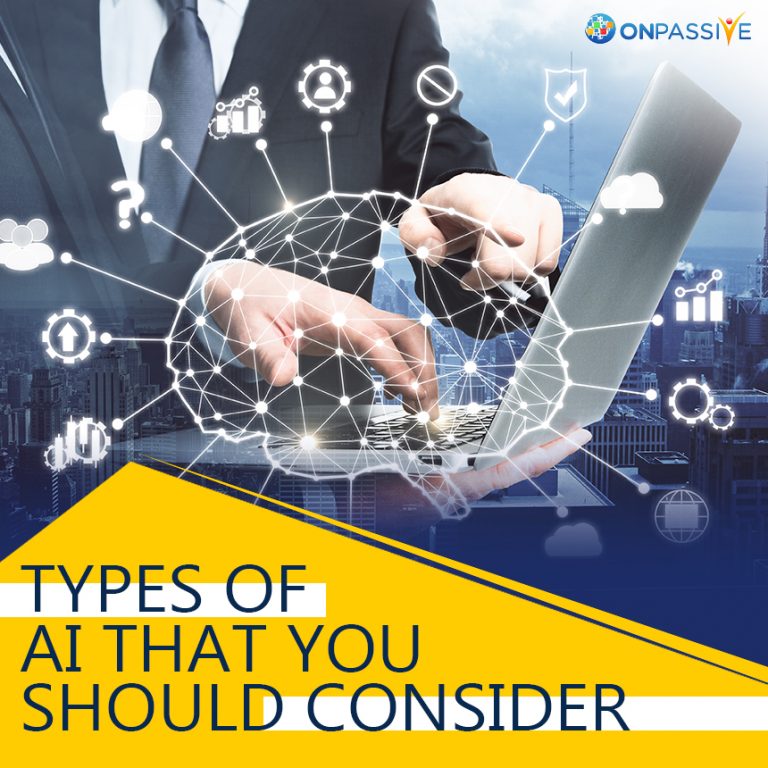
Artificial Intelligence is the astounding and exciting creations of humanity yet. While there are multiple AI applications, it is still tricky to comprehensively gain perspective on the potential impact of Artificial Intelligence in the future. It is mainly because of the revolutionary impact that Artificial Intelligence has on business operations and day-to-day lives.
AI’s countless applications and capabilities have made people doubtful about the inevitability and proximity of an Artificial Intelligence takeover. Besides, the transformations brought by AI across multiple business sectors have put business leaders under pressure to leverage AI technology immediately. However, many are still unaware of the types of Artificial Intelligence and its applications for their businesses.
- Reactive Machines
Reactive machines are one of the conventional forms of AI systems. As a result, they have minimal capability compared to other types of Artificial Intelligence. They solely imitate the human mind’s capability to react to different kinds of stimuli. The major disadvantage of reactive machines is that they do not have memory-based functionality. It implies they cannot use previously gained experiences to inform their present actions. The primary AI application these days is the ability to comprehend and learn. But, reactive machines lack this capability.
Reactive machines can be used for automatically responding to a limited set or combination of inputs. They cannot be utilized to rely on memory to improve their operations based on the same.
- Limited Memory
Limited memory is a type of AI that is comparatively better than reactive machines. It is because a limited memory system can even learn from historical data and make prudent business decisions.
All major AI applications come under this type of AI. Systems those using deep learning are led by large volumes of training data that they store in their memory to form a reference model for solving future problems. For example, an image recognition AI is trained using thousands of pictures and their labels to teach it to name objects it scans. Furthermore, almost all present-day AI applications, from chatbots and virtual assistants to self-driving vehicles, are all driven by limited memory AI.
- Theory of Mind
While the previous two types of artificial intelligence have been found in abundance, the next two types of AI exist, either as a concept or a work in progress. Theory of mind AI is the next level of AI systems that researchers are currently involved in innovating. While artificial emotional intelligence is an area of interest for leading AI researchers, achieving the Theory of mind level of AI will require development in other branches of AI as well. To truly understand human needs, AI machines will have to understand humans as individuals whose minds can be shaped by multiple factors, virtually “understanding” humans.
- Self-aware
Self-aware is a final stage of AI expansion that currently exists only hypothetically. Self-aware artificial intelligence will be able to read and extract emotions in those it interacts with and have emotions, needs, beliefs, and potential needs of its own. While the development of self-aware can potentially boost our progress, it can also potentially lead to catastrophe. It is because it would be capable of having ideas like self-preservation, which may directly or indirectly spell the end for humanity.
- Artificial Narrow Intelligence (ANI)
Artificial Narrow Intelligence or ANI is a type of artificial intelligence that represents all the existing AI. Artificial narrow intelligence points to AI systems that can only perform a specific task autonomously using human-like capabilities. A major defect of artificial Narrow Intelligence or ANI machines is that they can do nothing more than what they are programmed to do. As a result, they have a very limited or narrow range of competencies. Most complex AI that uses machine learning and deep learning to teach itself falls under ANI.
- Artificial General Intelligence or AGI
Artificial General Intelligence is the capability of an AI agent to learn, perceive, understand, and function completely as a human being. Artificial General Intelligence systems are able to individually build multiple competencies and form connections and generalizations across domains, massively cutting down on time needed for training. This will make AI systems just as intelligent as humans by replicating multi-functional capabilities.
- Artificial Superintelligence (ASI)
The advancement of Artificial Superintelligence will probably mark the pinnacle of AI research, as AGI will become by far the most capable forms of intelligence. In addition to replicating human beings’ multi-faceted intelligence, Artificial Superintelligence will be exceedingly better at everything they do because of overwhelmingly more excellent memory, faster data processing and analysis, and decision-making capabilities.
Conclusion
While it’s hard to predict the future of AI, it’s certain that businesses across all industries can make efficient use of AI in their business processes. Keep pace with the different types of artificial intelligence and leverage them in your operations.


